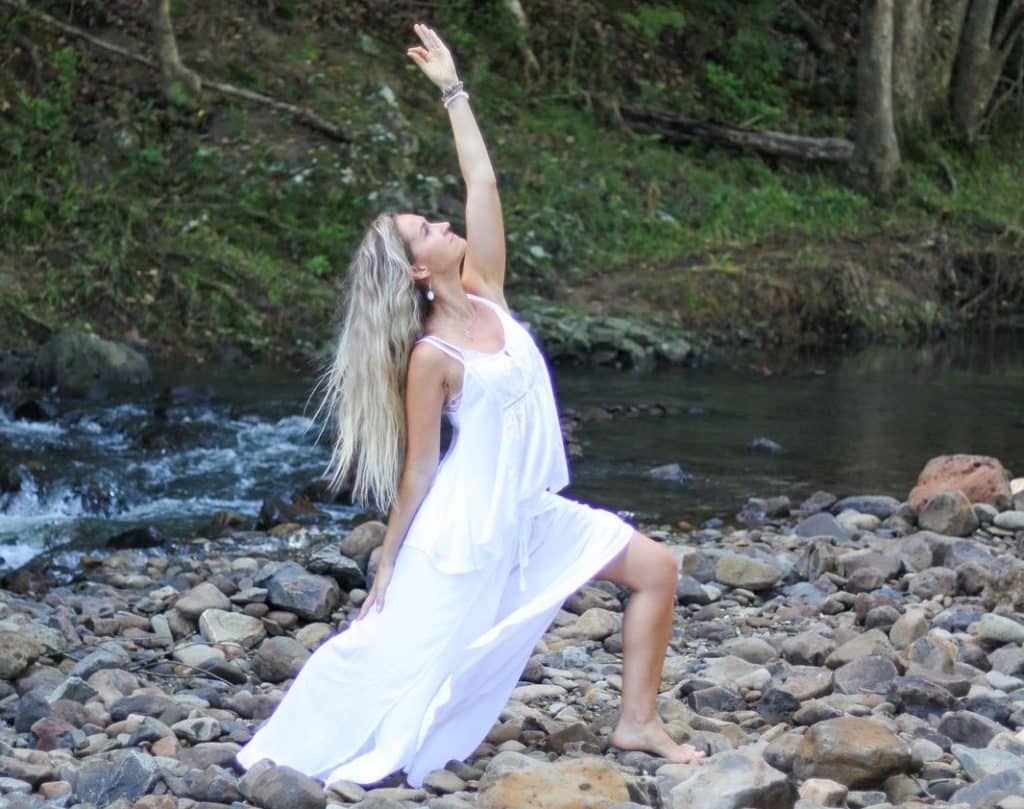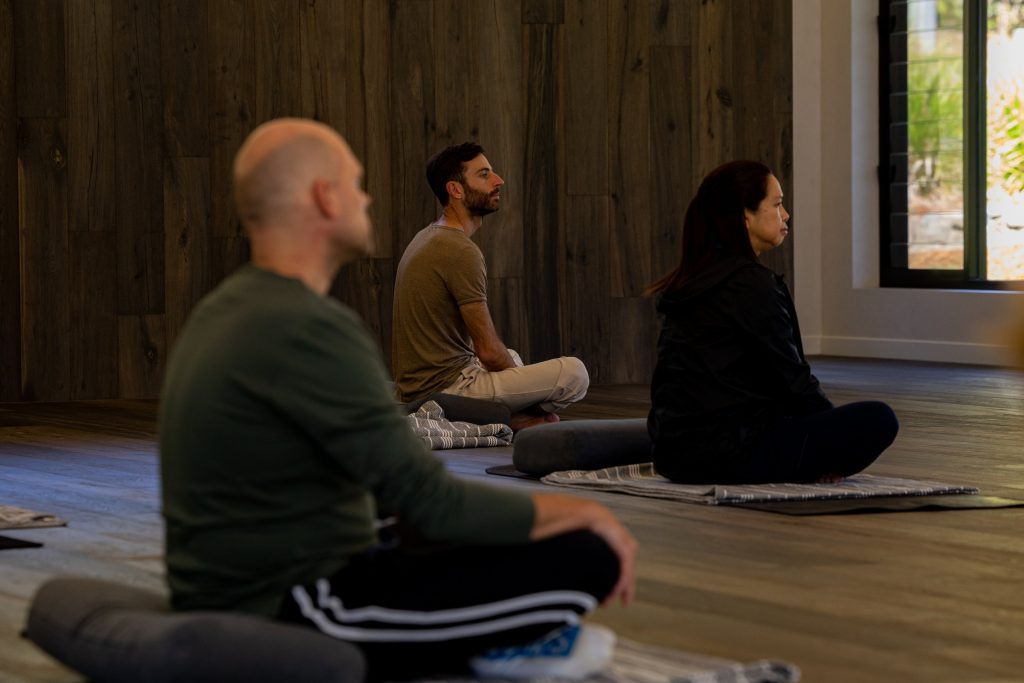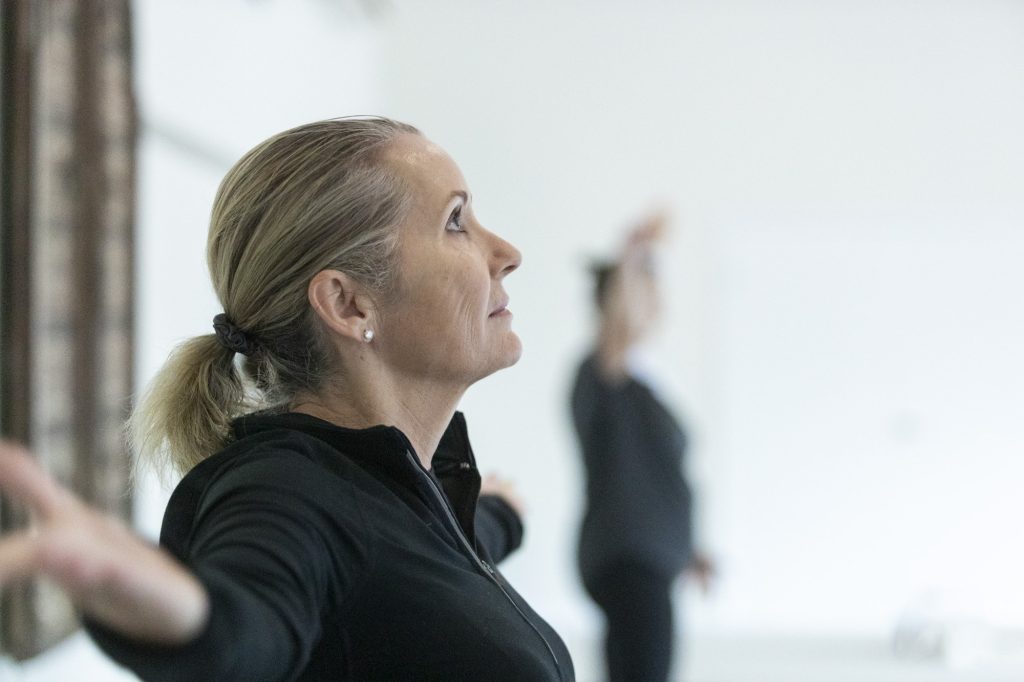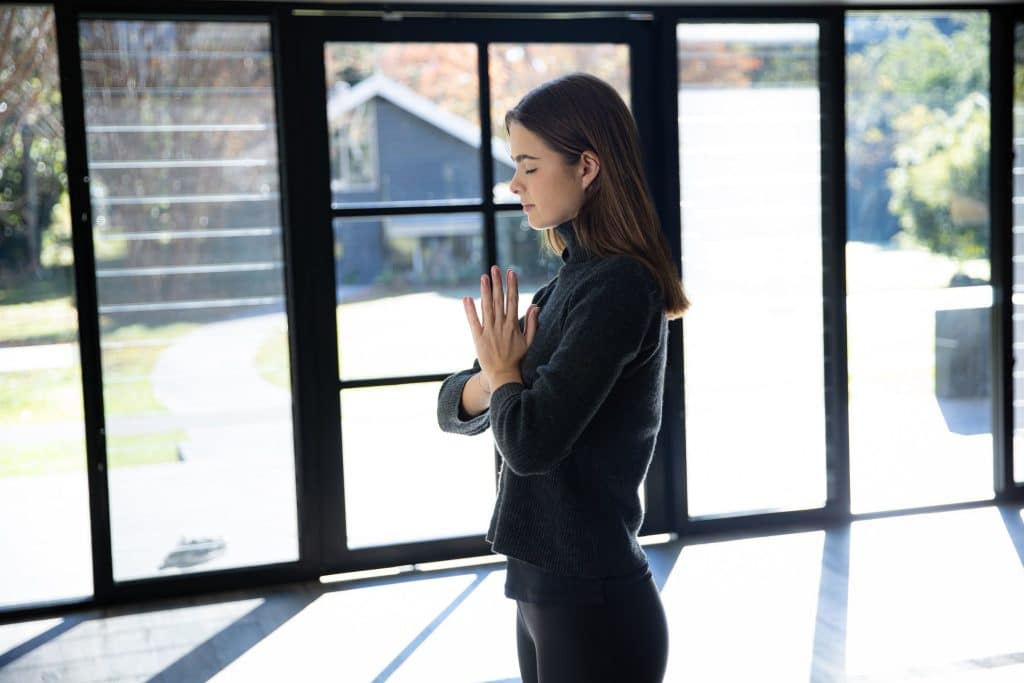Yoga is a core activity that we encourage our guests at Eden to participate in. Not only is it a wonderful exercise to help stretch and strengthen the body, but it provides a peaceful environment that naturally clears your mind and allows you to tune into the present moment.
Practising yoga effectively is as much about mindful breathwork as it is about flowing through the poses and positions. An automatic bodily function, how you breathe has the power to influence your mental and physiological state.
“When we take the time to pause, slow down and take a deep breath, we voluntarily regulate our nervous system. A deep breath lowers our heart rate, regulates blood pressure and helps us to relax, which assists in decreasing the amount of cortisol (stress hormone) released into our body. “
Click here to read more in our journal entry, Enhancing your mental state through the power of breathing.
For International Day of Yoga, our incredible Yoga Instructor Lauren has shared three breathing techniques that she recommends for regaining calm in times when you may find yourself spiralling into an emotional or stressed state.

Exercise 1: Full Yogic Breath
Some benefits of this breathing technique include:
- Brings more oxygen to the body
- Release of endorphins
- Refreshes the mind
- Reduces blood pressure
- Relieves stress
- Helps to correct unhealthy breathing patterns
This technique is particularly beneficial in everyday life because it requires no special position to achieve a grounded and relaxed state of awareness.
Instructions
In order to practise Full Yogic Breath correctly and effectively, three components of breathing have to work in harmony.
- Diaphragmatic breathing (Adham Pranayama) Lower lung breathing
Lie flat on your back (Shavasana) and place your hands on your abdomen with your fingers touching and take a slow, deep breath into your belly. Feel the belly inflate like a balloon as you inhale, and deflate as you exhale. Try to not raise your chest or your shoulders, and keep your awareness on the belly. Practise this for three breaths.
- Middle lung breathing (Madhyam Pranayam)
Move your hands above your navel to your ribcage, fingertips touching. Feel the ribs expand as you inhale into the intercostal muscles. Feel the ribcage retract as you exhale. Aim to keep your abdominal and upper chest still. Practise this for three breaths.
- Clavicular breathing (Adhi Pranayama) Upper lung breathing
Place your hands on your collarbones, fingertips lightly touching. Feel your chest bone and collarbones lift as you inhale and feel your chest withdraw on the exhale. Aim to keep the middle of your chest and abdominal areas still. Practise this for three breaths.
Full Yogic Breath (Connecting all three parts of the breath into one fluid motion)
You may continue to use your hands as a guide. Breathe into the belly, feeling it rise. Keep inhaling as the breath expands the ribs and then the chest. Pause for a moment, completely filled with air. Exhale from the chest, then the ribs and then the belly. Pause. Continue the same sequence, inhaling to the belly, the ribs, the chest and so on. Practise this for three breaths or as long as you feel comfortable. The complete yoga breath increases the supply of oxygen in your body, soothes the nervous system and helps to calm your mind.
Note: It is useful to work on your breathing on an empty stomach; finish eating two to three hours before you begin. Witness your breath blossom without force or strain. As you become more comfortable with the practice of Full Yogic Breath, you can integrate this style of breathing more and more throughout your day-to-day activities.
Exercise 2: Square ‘Box’ Breath (Sama Vritti Pranayama)
A powerful yet simple relaxation technique that aims to reset breathing to its natural rhythm and prepare you for sleep. Some benefits of this breathing technique include:
- Relieves stress, anger and agitation
- Calms the nervous system
- Clears the mind
- Brings clarity and focus to the present situation.
Instructions
- Sit or lie down comfortably. If sitting, keep your hips elevated above your knees by sitting on a cushion.
- Close your eyes and relax your face.
- Breathe in slowly through your nose, to the count of four. Feel the breath filling your lungs (Full Yogic Breath).
- Hold your breath here and slowly count to four. Try not to shut off your airway, rather simply avoid inhaling or exhaling for four counts.
- Slowly exhale for another four counts.
- Repeat for three rounds or until you feel calm and relaxed.
Note: This four-square technique can be effective whenever you find yourself in a stressful situation.

Exercise 3: Buzzy Bee Breath (Bhramari, Shanmukhi Mudra)
Some benefits of this breathing technique include:
- Activates relaxation response
- Lowers blood pressure
- Calms mental chatter
- Instils a sense of peace and bliss in the body
Instructions
- Sit in a comfortable position with your hips elevated above your knees by sitting on a cushion.
- Close your eyes. Breathe in and out through your nose. Relax your face and jaw, keeping your lips gently closed while allowing your teeth to remain separated.
- Place your thumbs in readiness to close your ears, your index fingers on your closed eyelids, your middle fingers resting on your nostrils, your ring fingers just above your closed lips, and your pinky fingers just below your lips. Do not completely block your nose or hold your breath. Make sure your hands are positioned in a way that allows you to comfortably and continuously breathe in and out through your nose. The hand position symbolises closing the six gates of perception.
- Keeping your ears and nose gently blocked, take a deep breath in through your nose and exhale through your nose. On your exhale, make a high-head humming or buzzing sound (like a bumblebee).
- Continue for at least three cycles of breath, or as long as you like.
Note: While practising Buzzy Bee Breath, see if you can feel the vibration of your humming in your face. You may notice a vibrating sensation in your jaw, cheekbones, teeth, or maybe on the surface of your skin. If you are having trouble feeling the vibration, try humming at a higher pitch. After practising this breath, take a few moments to sit in silence and allow yourself to breathe naturally. This breathing technique can help block out external distractions, and the humming can give you something to focus on to quieten your mind.
Creating a daily habit
We all have the potential to change our personal wellbeing. With little effort on our part, we can bring our bodies back towards harmony and alignment by consciously noticing the way we breathe in different situations throughout the day. Each day we take about 23,000 breaths, so what if we became more acquainted with the way we inhale and exhale? We can start to make a positive shift in the way that we breathe simply by lengthening our respiration process.

A simple and short daily breathing activity
Let’s start to extend the length of the breath as you take a deep inhalation… feeling your chest expand as your rib cage rises, oxygen flowing into your belly as your belly expands. As you slowly exhale through your nose, can you feel the warmer air leaving your nostrils and brushing over your upper lip? This is all part of breath awareness and mindfulness.
Perhaps initially you found it challenging to extend the breath into the depths of your belly and your breath only flowed into the upper sections of your lungs. With practice, explore the depths of your lungs by breathing deep down into your belly. Observe the sensations in your body as you breathe deeply and slowly. Notice how you feel once you have taken three deep belly breaths. Perhaps your thoughts have become fewer and farther between. Perhaps your heart rate has decreased and you feel more relaxed. I encourage you to take moments during the day just like this, to pause and sit with your breath. Remember, you are one deep breath away from peace.
Task:
- Notice how you breathe when you are under stress and perhaps feeling under pressure (e.g. breath-holding, shallow, rapid)
- Notice how you breathe when you are angry or frustrated (e.g. short, hard, fuming)
- Notice how you breathe when you are feeling nervous or anxious (e.g. restricted, shallow, perhaps unconsciously holding the breath).
- Now, notice how you breathe when you are feeling happy, satisfied, content and calm (e.g. full, slow, deep, expansive)
After analysing your breathing in different situations and emotional states we can start to become lucid with the fact that our emotional state has a clear and recognisable link to our pattern of breathing. Here is the magic: if your emotional state can control your pattern of breathing, then when we bring consciousness to our breath and start to engage a breath pattern that influences a different emotional state. In other words, breathe how you want to feel.
Initiating your daily breath practice
To begin with, I recommend setting a reminder on your device every waking hour of the day that says ‘breathe’. When you see this reminder, stop and observe your emotional state and the pattern of your breathing. Noticing is the first step to consciousness.
Then undertake one of the breathing techniques (listed prior) for 3-5 minutes (you can even do most of these whilst continuing with your current activity) and notice how you feel. Just by noticing, practising and then noticing again, you will start to reinforce fuller, deeper breathing in your natural resting breath state. Once you start to feel the physiological benefits of these breathing exercises, you will naturally be drawn to activate them when you find yourself in a heightened emotional state, which will automatically bring your body back into a state of homeostasis.
If you enjoyed this article and would like to read more from Lauren, click here.





